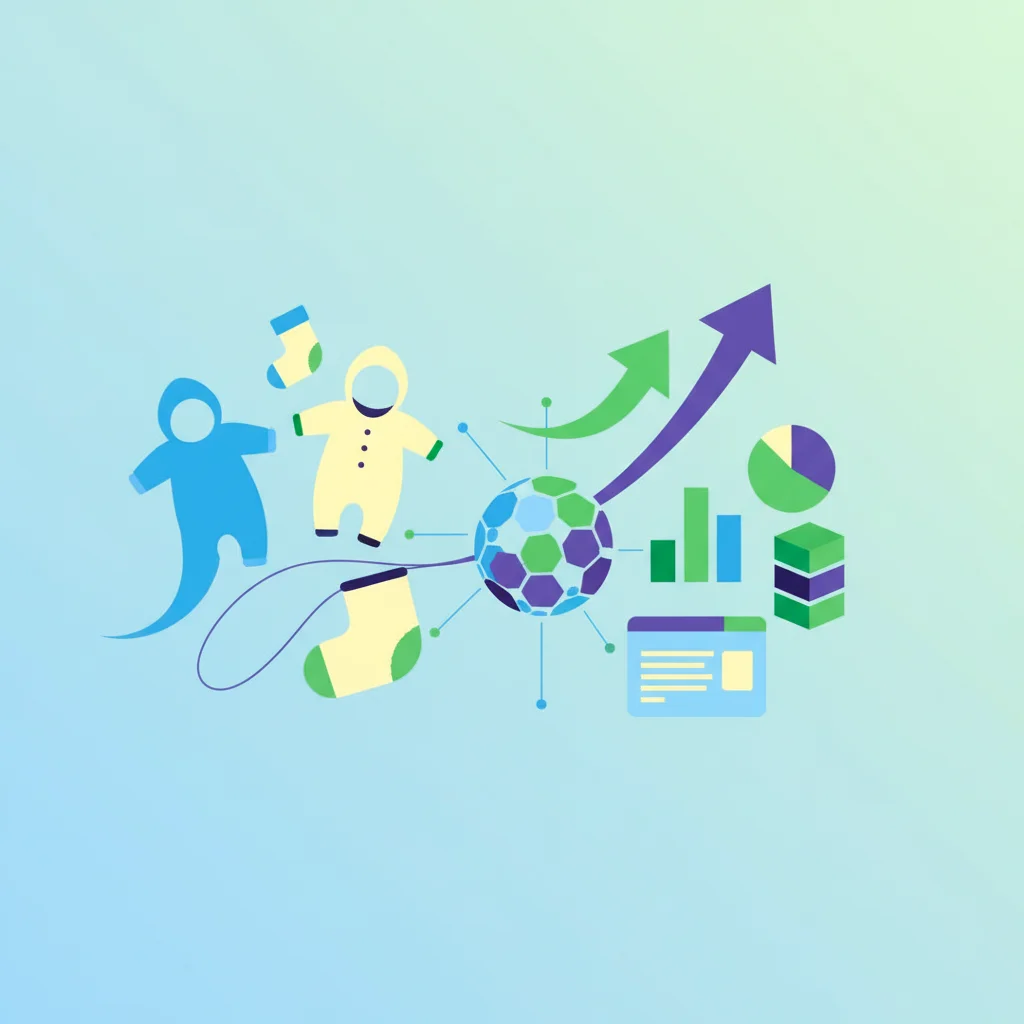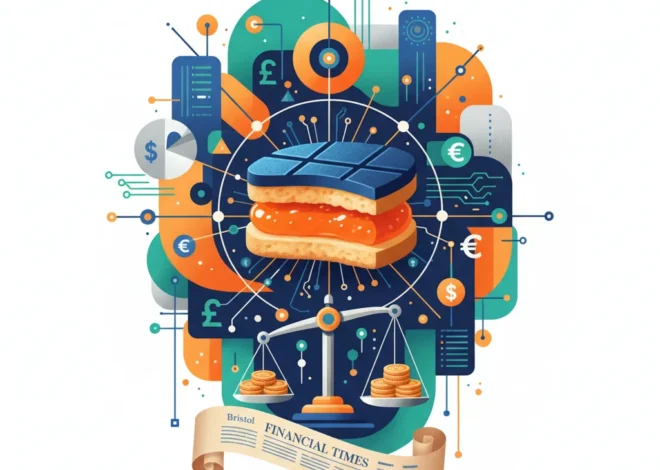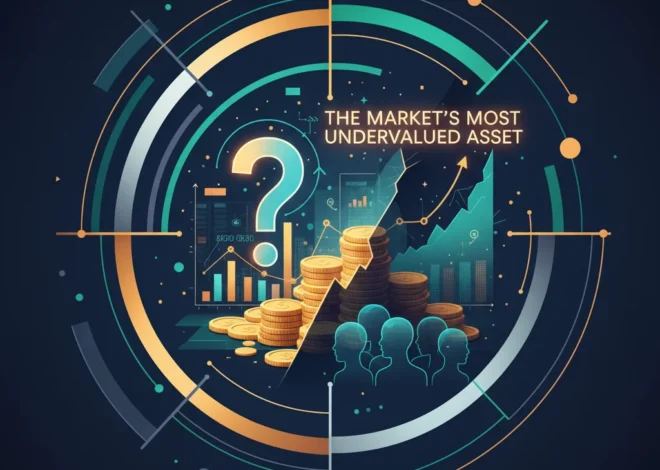
From Baby Clothes to Balance Sheets: Why a Local Charity is a Bellwether for the Global Economy
The Unseen Indicator: What a Small-Town Charity Reveals About Our Economic Future
In the quiet town of Strabane, a new shop has opened its doors. It doesn’t sell luxury goods or the latest tech gadgets. Instead, it offers a simple, vital service: free baby clothes for children up to the age of five for parents facing hardship. On the surface, this is a heartwarming local news story—a community coming together to support its most vulnerable. But for astute investors, finance professionals, and business leaders, it’s something more. It’s an unfiltered, real-time data point signaling deep-seated tremors within the global economy.
While analysts on Wall Street and in the City of London scrutinize CPI figures and quarterly earnings reports, the true state of economic health is often most visible on Main Street. Initiatives like the one in Strabane, as reported by the BBC, are not just acts of charity; they are grassroots responses to systemic financial pressure. They represent a canary in the coal mine, highlighting a growing chasm between official economic narratives and the lived reality of millions. This article delves into why such micro-level social trends are becoming essential, albeit unconventional, indicators for understanding macroeconomic shifts, investment opportunities in the circular economy, and the disruptive potential of financial technology.
Reading the Tea Leaves: Local Hardship as a Leading Economic Indicator
Traditional economics relies on lagging indicators. GDP growth, inflation rates, and employment figures tell us where the economy was, not necessarily where it is heading. The recent cost-of-living crisis, however, has exposed the limitations of this model. While central banks debated inflation targets, families were already making difficult choices between heating and eating. The demand for a free baby clothes service is a direct consequence of this pressure.
Consider the escalating costs faced by new parents. In the UK, the estimated cost of raising a child to the age of 18 has surged, with basic necessities forming a significant portion of the expense. A 2023 report by the Child Poverty Action Group found that the basic cost of a child from birth to 18 is now over £166,000 for a couple (source). When disposable income is squeezed by inflation and stagnant wages, non-essential spending is the first to go, but soon after, even essential purchases become a struggle. This directly impacts the retail sector, supply chains, and ultimately, corporate earnings reported on the stock market.
For investors and analysts, these on-the-ground signals offer a more nuanced view of consumer sentiment than any survey. They indicate a pivot from aspirational consumption to needs-based survival, a trend that should inform any strategy related to consumer discretionary stocks, retail real estate, and even the loan portfolios of major banking institutions.
The Investor's Paradox: What a "Thrifty Gene" Reveals About Surviving a Bull Market
The Circular Economy: A Business Model Born from Necessity
The Strabane shop is a perfect microcosm of the circular economy—a model that emphasizes reusing, repairing, and recycling over the traditional linear model of “take, make, dispose.” While often framed as an environmental initiative, its recent acceleration is being driven by economic necessity. The second-hand apparel market is booming, not just because of eco-conscious Gen Z consumers, but because it offers a financially viable alternative for families under pressure.
This shift represents a monumental challenge and opportunity for the business world. Companies clinging to a linear model face declining demand and accusations of wastefulness, while those embracing circularity are discovering new revenue streams, enhanced brand loyalty, and greater resilience. For those involved in investing, this trend is creating a new class of leaders and laggards.
Below is a comparison of the linear and circular models in the context of the apparel industry:
| Aspect | Linear Economic Model | Circular Economic Model |
|---|---|---|
| Resource Input | Virgin raw materials (cotton, oil for synthetics) | Recycled fibers, pre-owned garments, sustainable materials |
| Production Focus | High volume, low cost, rapid trend cycles (“fast fashion”) | Durability, repairability, timeless design |
| Consumer Relationship | Transactional (purchase and dispose) | Relational (buy-back programs, repair services, rentals) |
| End-of-Life | Landfill or incineration | Resale, donation, or recycling into new materials |
| Investment Signal | High inventory risk, supply chain vulnerability, negative ESG rating | Reduced resource dependency, strong brand equity, positive ESG rating |
Investors are taking note. According to a report by the Ellen MacArthur Foundation, the circular economy represents a multi-trillion-dollar opportunity (source). Companies that integrate these principles are not just doing good; they are building more robust and future-proof business models, making them attractive long-term holdings.
Can Technology Bridge the Gap? The Role of FinTech and Blockchain
While community initiatives are vital, they are often treating the symptoms rather than the cause. The underlying issue is a lack of financial resilience and access to fair financial services. This is where fintech and innovative financial models can play a transformative role.
The traditional banking system often fails those who need it most. High fees, stringent credit requirements, and a lack of accessible financial education can trap people in cycles of debt. Financial technology offers a path forward:
- Financial Inclusion: Neobanks and mobile money platforms can provide low-cost banking services to the unbanked and underbanked, helping them save, transact, and build a financial history.
- Alternative Credit Scoring: AI-powered fintech platforms can use alternative data (like utility payments) to assess creditworthiness, opening up access to fair credit for those ignored by traditional bureaus.
- Microsavings and Investing: Apps that round up purchases and automatically invest the spare change can help families build a financial buffer, no matter how small their income.
Furthermore, emerging technologies like blockchain can bring unprecedented transparency and efficiency to the charitable sector itself. Imagine a donation platform where you can track your contribution in real-time as it’s used to purchase supplies, with every transaction recorded on an immutable ledger. This could eliminate overhead, prevent fraud, and build donor trust, channeling more resources directly to those in need. This isn’t science fiction; organizations are already exploring blockchain for supply chain management and transparent aid distribution (source).
The New Playbook: How Activists and LBOs are Targeting Corporate Underdogs
From Strabane to the Stock Market: The Ripple Effect on Global Finance
Ultimately, the financial well-being of households is inextricably linked to the performance of the global stock market. The pressures that lead to the creation of a free baby clothes shop have a direct and measurable impact on corporate valuations and market stability.
When a significant portion of the population is struggling, consumer spending patterns shift dramatically. Discretionary sectors—such as high-end retail, travel, and entertainment—suffer, while consumer staples and discount retailers may see resilient demand. This bifurcation is a key theme for any modern portfolio manager. A professional involved in trading must look beyond a company’s balance sheet and understand the financial health of its target customer base.
The story of the Strabane shop is a powerful, ground-level data point that confirms a macroeconomic trend: consumer resilience is finite. As a society and as an investment community, we must decide how to respond. Do we wait for lagging government statistics to confirm the crisis, or do we act on the clear signals in front of us? The most successful business leaders and investors of the next decade will be those who understand that the distance between a small charity in Strabane and the global financial markets is shorter than we think. They will see that sustainable growth is not built on abstract figures, but on the financial health and stability of the communities that power the entire economic engine.
The Investor's Paradox: Are We Riding a Bubble or Just Trusting the Cavalry?


